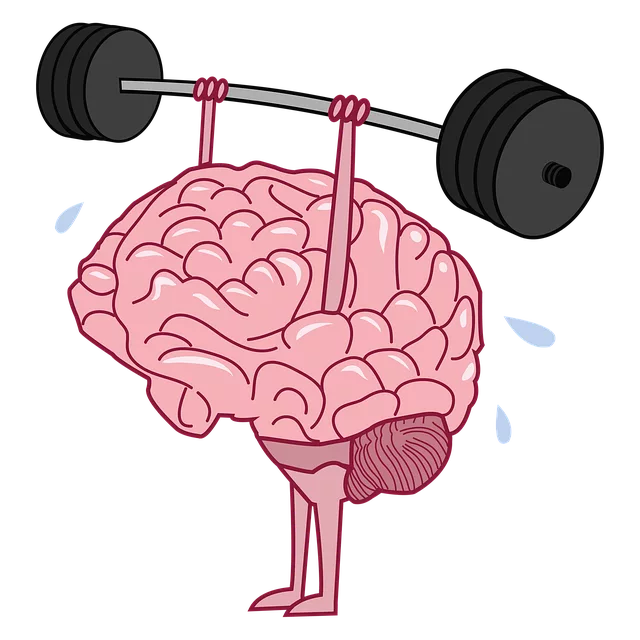A successful mental wellness app marketing strategy focuses on understanding target demographics, addressing specific needs like stress and social skills development, and differentiating from competitors. By leveraging diverse channels, partnerships with established organizations (e.g., Kaiser Permanente), and tailored promotions (like Golden loyalty schemes), the app gains visibility. Measuring success through KPIs like user engagement, retention, and behavioral changes, alongside real-world impact and user feedback, ensures a valuable resource for mental wellness and social connections.
In today’s digital age, mental wellness apps are a vital resource, especially with the increasing demand for accessible care. To thrive in this competitive market, developers must craft a strategic marketing plan that resonates with users seeking support. This article guides you through an effective approach to app marketing, from understanding your target audience’s needs through to successful measurement strategies. Learn how to differentiate your app, choose optimal channels, and ultimately reach and assist those in need, akin to the comprehensive services offered by Kaiser Permanente behavioral health.
- Understanding the Target Audience: Identifying Needs and Pain Points
- Positioning Your App: Differentiating in a Crowded Market
- Marketing Channels and Tactics: Reaching Users Effectively
- Measuring Success: Key Performance Indicators for Mental Wellness Apps
Understanding the Target Audience: Identifying Needs and Pain Points

Understanding your target audience is a crucial step in crafting an effective marketing strategy for a mental wellness app. When it comes to apps focused on behavioral health, identifying the specific needs and pain points of potential users is key. Many individuals seeking mental wellness resources might be dealing with stress, anxiety, or depression, which often requires tailored support. By conducting thorough market research, you can discover the unique challenges faced by your target demographic, whether they are young adults navigating college pressures or working professionals struggling with work-life balance.
For instance, organizations like Kaiser Permanente offer behavioral health phone numbers as a service, highlighting the growing demand for accessible mental health support. This trend suggests that users are actively searching for digital solutions to manage their well-being. Incorporating features such as compassion cultivation practices, social skills training, or stress management workshops within your app can address these pain points directly. By providing practical tools and resources, you can cater to the diverse needs of your audience, ensuring a more engaging and effective marketing approach.
Positioning Your App: Differentiating in a Crowded Market

In today’s digital age, the market for mental wellness apps is both competitive and vibrant. To stand out from the crowd, your app needs a unique positioning strategy that speaks directly to users’ needs and preferences. One way to differentiate is by focusing on specific aspects of behavioral health that often get overlooked. For instance, while many apps cater to general anxiety or stress reduction, consider targeting individuals seeking tailored solutions for social skills development. This niche approach can attract those in need of emotional well-being promotion techniques that foster healthier interactions and relationships, a gap that your app can uniquely fill.
By positioning your mental wellness app as an innovative tool for social skills training, you tap into a growing demand that extends beyond the traditional scope of behavioral health services. Leveraging the success of public awareness campaigns development centered around emotional well-being promotion, your app can become a go-to resource for users seeking to enhance their interpersonal connections and overall mental wellness. Think about it: unlike competitors, your app offers not just a solution but a holistic approach that combines proven techniques with user-friendly accessibility, making it an attractive option for those seeking comprehensive behavioral health support, especially when compared to the generic services offered by giants like Kaiser Permanente behavioral health phone number.
Marketing Channels and Tactics: Reaching Users Effectively

Reaching users effectively is paramount when developing a marketing strategy for a mental wellness app. Incorporating diverse channels and tailored tactics ensures that the target audience, particularly those seeking burnout prevention strategies or interested in enhancing emotional intelligence, can easily discover and engage with your app.
A multifaceted approach may include leveraging online platforms such as social media networks, where targeted ads and organic content focused on public awareness campaigns development can resonate with users searching for behavioral health support. Additionally, collaborating with trusted organizations like Kaiser Permanente, renowned for their behavioral health services, could expand reach. Integrating referral programs or offering exclusive promotions through the Golden (e.g., membership or loyalty) program might encourage existing users to invite friends and family, fostering a sense of community around mental wellness.
Measuring Success: Key Performance Indicators for Mental Wellness Apps

Measuring success is a critical aspect of developing any marketing strategy for mental wellness apps. Key Performance Indicators (KPIs) should focus on user engagement, retention, and positive behavioral changes. For instance, tracking the number of active users daily or weekly can provide insights into app adoption and loyalty. Additionally, monitoring the completion rates of various modules within the app indicates the effectiveness of content delivery.
Integrating phone numbers for Trauma Support Services or accessing resources through the Kaiser Permanente behavioral health line can be valuable KPIs. These metrics demonstrate the real-world impact of the app, encouraging users to seek additional help when needed. Moreover, evaluating improvements in emotional well-being promotion techniques and social skills training through user feedback and self-reported assessments showcases the app’s contribution to overall mental wellness.
Developing an effective marketing strategy for a mental wellness app requires a deep understanding of your target audience’s needs and pain points, unique positioning in a crowded market, and targeted marketing channels. By leveraging digital platforms and focusing on measurable key performance indicators, you can ensure your app stands out, reaches the right users, and makes a positive impact – perhaps even serving as a valuable resource for those seeking support, much like the Kaiser Permanente behavioral health phone number in Golden. Through thoughtful execution, your app can become an integral part of the mental wellness landscape.






